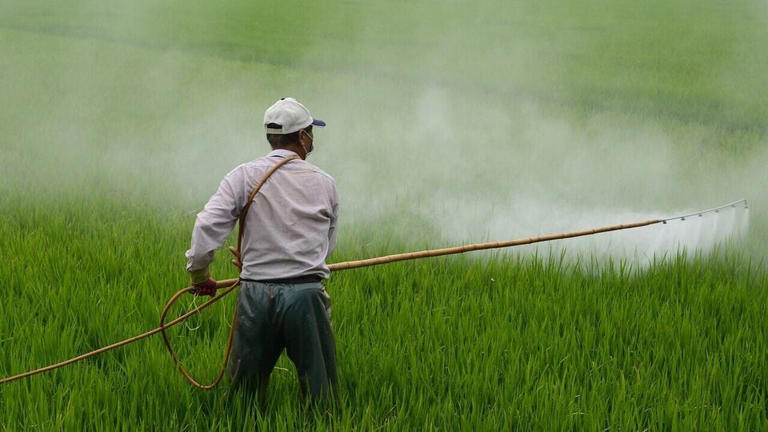Tags
EU alerts on pesticide residue in Indian rice shipments surges
But presence of critical chemicals in the consignments registers a decline over the last two years
BY SUBRAMANI RA MANCOMBU

Overall, alerts for rice exports by India to the EU increased to 40 in 2022 from 11, while they were 30 until September
There is a rapid rise in the Europe Union’s alerts on the presence of pesticide residues in rice consignments from India. But detection of some of the critical chemicals in each consignment has decreased between 2021 and 2023.
According to Luxembourg-based Eurofins Scientific SE, which provides laboratory testing services worldwide in food and other items, alerts under the rapid alert system for food and feed (RASFF) in Europe for pesticides increased to 30 in 2022 from 9 in 2021. Until September this year, 23 alerts have been made.
The revelations are significant given the fact that the presence of pesticide residues has resulted in a decline in rice exports to the EU and other countries such as the Gulf nations.
Overall, alerts for rice exports by India to the EU increased to 40 in 2022 from 11, while they were 30 until September, Eurofins said in a recent presentation on “Pesticides residues in Rice” at the Anuga Food Fair 2023 in Germany.
No GMO
A feature of the findings of rice exports from India is that no genetically-modified organism (GMO) has been found this year compared with one such alert last year. The finding of GMO led to hue and cry being raised by the EU and India.
On the other hand, alerts have been given for traces of GMO being found in five Vietnamese rice consignments so far this year. Eurofins Managing Director Alexander Zahm pointed out that the concern over the rapid alerts is that the presence of pesticides in the cereal’s shipments to the EU has increased over the last two years.
For consignments from India, alerts were issued for 42 types of pesticides with the highest — 17 — being for tricyclazole, while the EU sounded alarm over 14 consignments with thiamethoxam. Tricyclazole, which is feared to cause harm to the liver and other human organs, is used to tackle rice blast, while thiamethoxam, which can affect the liver and reproduction, is used to kill insects.
Eurofins said the percentage of critical pesticides’ residue detected has decreased since 2021. In the case of tricyclazole, the level of detection has decreased to 2.68 per cent this year from 10.69 per cent in 2021. Thiamethoxam levels have dropped to 1.53 from 9.07 per cent during the review period.
The detection of other critical pesticides such as diphenylamine, chlorpyrifos, imidacloprid, propiconazole, buprofezin, phthalimide, acephate, phosphate, profenofos, transfluthrin, DDAC, hexaconazole, phorate-sulfoxide and acetamiprid has also decreased.
Rice experts, however, have sounded caution. The Directorate-General of Foreign Trade (DGFT), through a notification on May 29 this year, exempted inspection and testing of rice shipments, which needs to be viewed in this context, according to S Chandrasekaran, who has authored a book on the natural history of Basmati rice geographical indication.
Sound caution
“Data show the number of alerts in Europe has increased during the last two years. The trend suggests a policy intervention is essential to defend and extend the gain in the rice export market. India lost close to 2 lakh tonnes of basmati rice market in Europe due to the pesticide residue issue,” he said.
Similarly, South Indian rice exports have dropped 25,000 tonnes. “The macro economic indicators of competitors suggest that India could gain this market back if the government plans for a fool-proof and robust testing regime. This should be part of the protocol of the ongoing European Union and UK free trade agreement negotiations,” said Chandrasekaran.
In the case of tricyclazole and phthalimide, the levels are near the maximum parts per million (ppm) permitted. However, in the case of Pakistan, the detection of the critical pesticide chemicals has increased during 2021-23.
The one concern for India and Pakistan is that the EU Food Safety Authority plans to reduce the maximum residue level permitted in tricyclazole to 0.09 ppm. India has already taken up the issue with the EU.
Eurofins said the presence of phosphonic acid, which was found in a total of 408 samples in the EU, is a challenge in rice shipments. No limits have been prescribed for the chemical, though the EU plans to regulate it from 2025-26.
https://www.thehindubusinessline.com/economy/agri-business/eu-alerts-on-pesticide-residue-in-indian-rice-shipments-surges/article67489041.ecePublished Date: November 2, 2023






